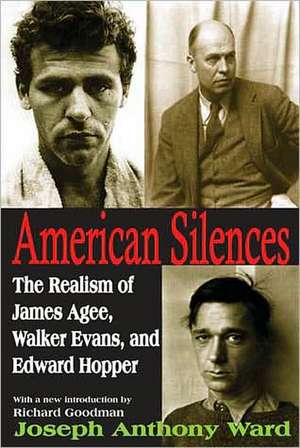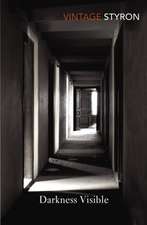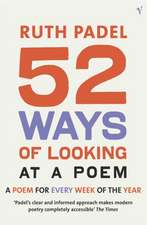American Silences: The Realism of James Agee, Walker Evans, and Edward Hopper
Editat de Joseph Warden Limba Engleză Paperback – 30 iul 2010
Preț: 310.05 lei
Nou
Puncte Express: 465
Preț estimativ în valută:
59.34€ • 61.72$ • 48.98£
59.34€ • 61.72$ • 48.98£
Carte tipărită la comandă
Livrare economică 14-28 aprilie
Preluare comenzi: 021 569.72.76
Specificații
ISBN-13: 9781412810975
ISBN-10: 1412810973
Pagini: 238
Dimensiuni: 152 x 229 x 13 mm
Greutate: 0.34 kg
Ediția:1
Editura: Taylor & Francis
Colecția Routledge
Locul publicării:Oxford, United Kingdom
ISBN-10: 1412810973
Pagini: 238
Dimensiuni: 152 x 229 x 13 mm
Greutate: 0.34 kg
Ediția:1
Editura: Taylor & Francis
Colecția Routledge
Locul publicării:Oxford, United Kingdom
Notă biografică
Joseph Anthony Ward was professor of English at Rice University and author of The Imagination of Disaster: Evil in the Fiction of Henry James and The Search for Form: Studies in the Structure of James's Fiction.
Cuprins
Introduction to the Transaction EditionPrefaceAcknowledgmentsIntroduction: American Realism and the Aesthetic of SilenceOne: Four Fables of Silence: Poe, Melville, James, and AdamsTwo: Anderson and HemingwayThree: James AgeeFour: Walker EvansFive: Edward HopperEpilogueIndex
Descriere
In "American Silences", Joseph Anthony Ward offers a unique analysis of the use and effects of silence in modern American realistic art. Beginning with the nineteenth-century literature that laid the foundation for silence in art, he moves to a brief analysis of Sherwood Anderson's "Winesburg", Ohio and Ernest Hemingway's "In Our Time", showing how they, along with several other crucial works of twentieth-century American realism, incorporate the power of the silent into their expression without sacrificing the subjects and techniques of traditional realism. Examining "Let Us Now Praise Famous Men", James Agee's commentary on the life of tenant farmers, documented with photographs by Walker Evans, Ward traces the book's pattern of 'silence, then silence disturbed by sound, and ultimately silence restored'. Ward further supports his theory with a study of Agee's "A Death in the Family" and Evans' "American Photographs". Ward sees Agee's admiration of photography as a connection between the silence of the scenes he writes about and the silence of Evans' photographs. The use of silence is perhaps even more obvious in the paintings of Edward Hopper. Although throughout the book Ward suggests both the positive and negative qualities of silence in art, Hopper's paintings provide little in the way of postiveness. For Ward, the art of silence is an art of extreme concentration that seeks essences rather than superficiality that nearly transcends realism itself. The theme of silence in American realism is a significant new one, but Ward's interpretation of the prose and his analysis of the photographs and paintings, many of which are reproduced in this book, establish validity for art as the voice of silence.












